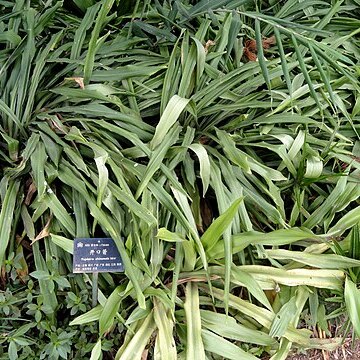Stemless herbs. Rhizome tuberous or horizontal, thick and woody; roots thick and fleshy. Leaves large, basal, scattered or distichous, usually distinctly petioled, expanding towards the base to form a sheath, with a strong main vein and numerous finer veins. Inflorescence a spike. Flowers numerous, each in the axil of a bract. Perianth segments 6 or 8, fleshy, fused, campanulate, equal. Anthers sessile or subsessile, inserted in tube, dorsifixed, oblong or ovoid, introrse. Ovary superior, sessile, subglobose or not externally differentiated from style, 3(-4)-celled; ovules 2 in each locule; style cylindrical; stigma large, peltate or capitate, entire or variously lobed. Fruit a globose berry, usually 1-seeded; seeds turgid; perianth persisting below the fruit.

